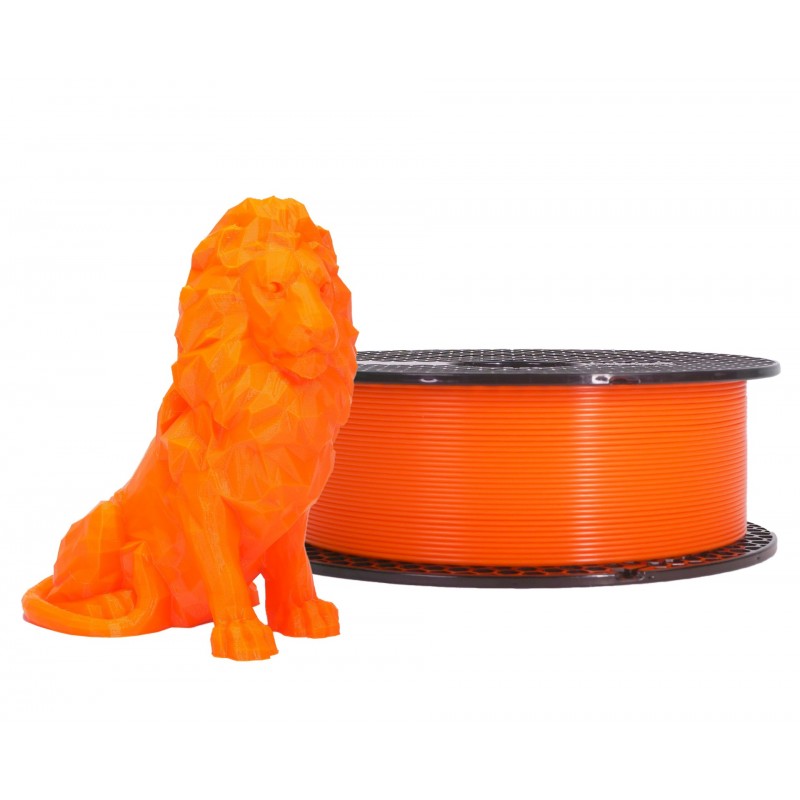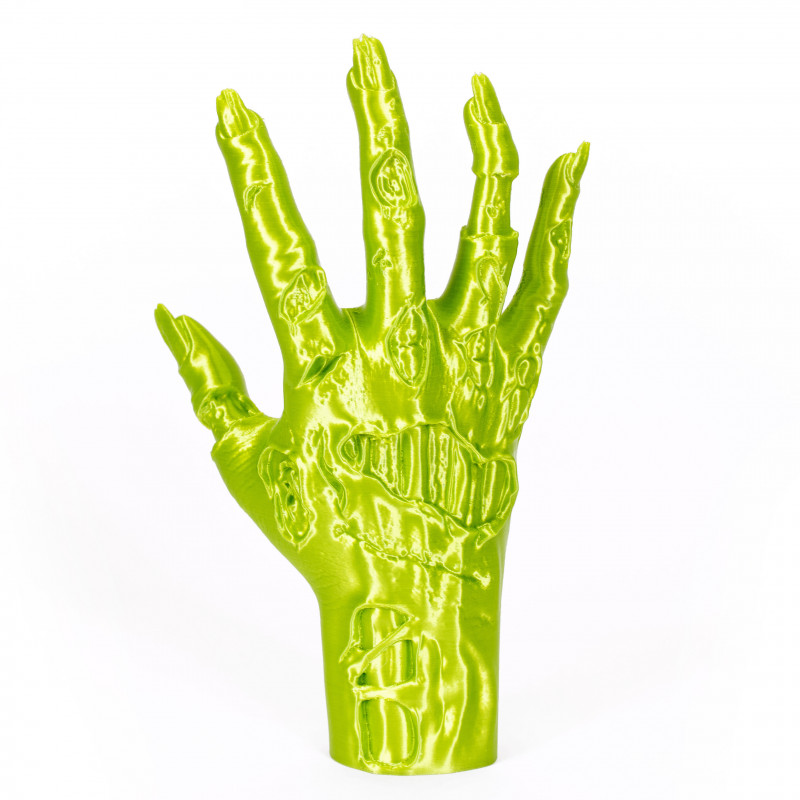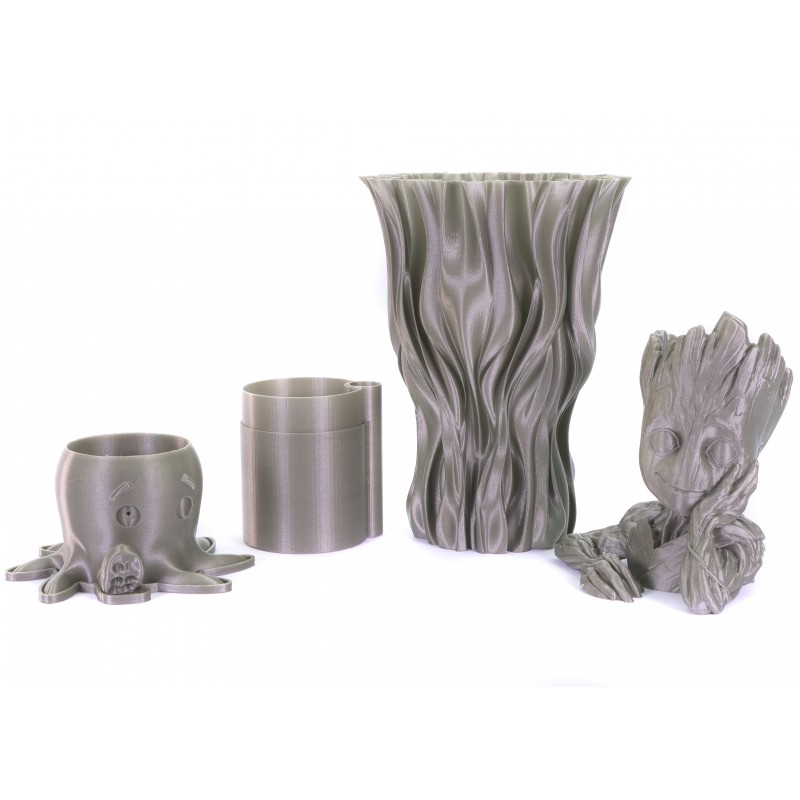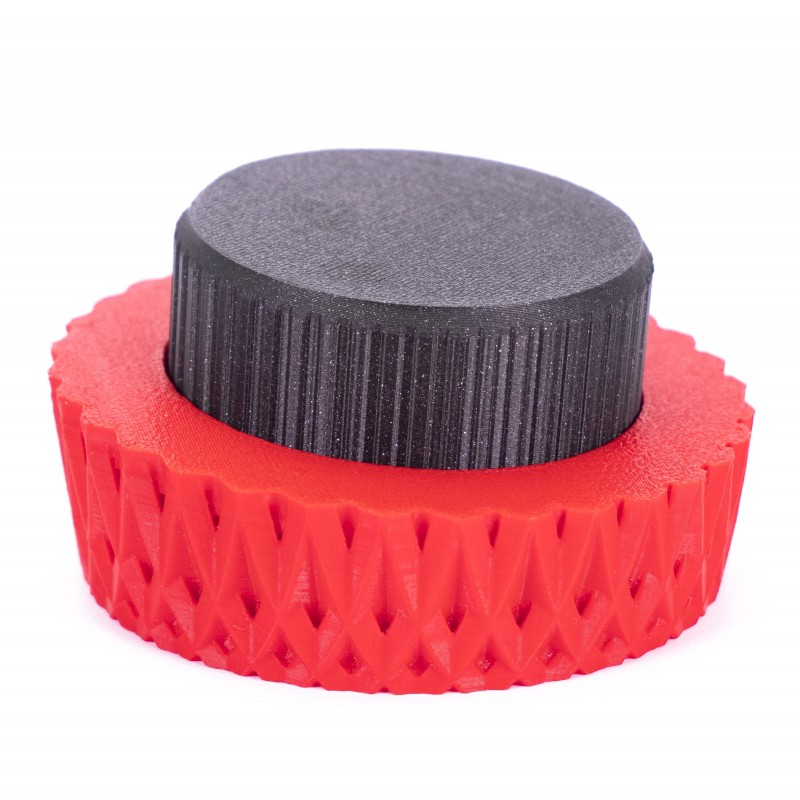
Basic info
Description
PLA (Polylactic acid) is a plant-based polyester. PLA does not require a heated bed, can be printed fast and with low temperatures (melting point is somewhere around 175 °C). With PLA you can print both small, detailed models and large objects filling almost the entire print volume. Unlike some other filaments, PLA is not prone to significant warping. It is good for quick prototyping and creation of nice, low-cost models: concepts, prototypes, simple toys, jewelry, statues, etc. It is not suitable for technical and outdoor use. It doesn’t resist high temperatures (it gets soft and deforms at temperatures over 60 °C), degrades under UV light and its mechanical resistance is also inferior - it breaks along layers or into shards upon impact. Layer adhesion is weaker compared to other materials. Sanding PLA is possible with sandpaper but needs water cooling (wet sanding).
Various sources claim that PLA is biologically degradable. The material is made from corn, sugar cane, or sugar beet and indeed can be decomposed, but only in specialized composting facilities where temperatures exceed 80 °C. It is definitely not a good idea to throw the PLA waste into your garden compost - the material will not disintegrate, plus you will contaminate the soil with plastic microparticles.
Although the PLA material itself is food-safe, we do not recommend it (or any other filament material) for printing dishes or other stuff that comes into direct contact with food. The main reason is tiny print layers/grooves that can support bacterial growth. If you still want 3D printed dishes or food containers, we suggest applying a special layer that seals the surface (food-safe coating) and printing with a stainless steel nozzle.
To compare supported material properties, see our material table.
|
Pros |
Cons |
|---|---|
|
✔ Low price |
✖ Brittle and inflexible |
|
✔ Easy to print, suitable for beginners |
✖ Low UV and temperature resistance |
|
✔ Good detail and low warping |
✖ Difficult post-processing |
|
✔ Suitable for large models |
Best use
The best use of PLA is for printing concept models, prototypes, or low-wear toys.
Tips for successful printing
Consider using a smooth PEI sheet
If you print with PLA on our Original Prusa i3 printers, you can print on either a smooth, powder-coated TXT or powder-coated satin sheet. However, the smooth sheet works better for printing parts that have a small contact area with the print surface. With a powder-coated sheet, you should move your live-Z lower: Filament must fill in the sheet texture. However, you need to be careful and not move the nozzle too low, or you will damage your sheet! Info for different printer users: PLA is printable not only on PEI surface, but also on glass, Kapton tape, or using a glue stick.
Try to adjust retractions for better results
PLA is sometimes prone to stringing and oozing - this can be reduced with proper retraction settings.
Chemical smoothing
Sample prints
 |  |
| Masks | Static models |
 |  |
| Vases, cups, and other tabletop models | Audio volume knob and other electronic parts |
5 comments
Hi!
No, you don’t have to use anything other than a proper degreasing of the print surface.
Hi! Testing proved it works better for Prusament. For other manufacturers, the ideal temps may differ ranging from 185 to 235 :)